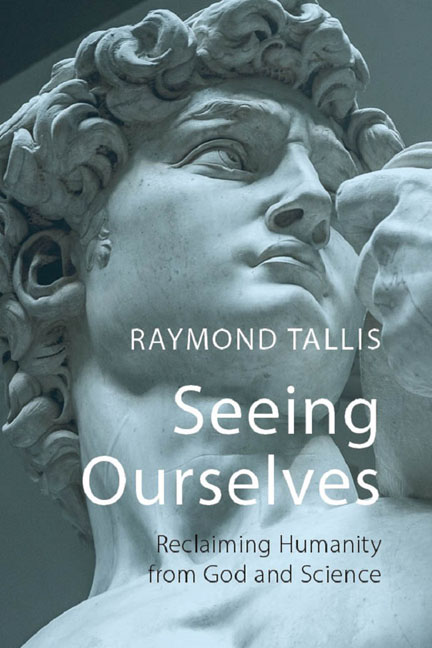Chapter 3 - I am and it is: persons and organisms
Published online by Cambridge University Press: 09 August 2023
Summary
We are neither apes nor angels; neither mere organisms nor disembodied spirits passing through nature from a pre-natal to a post-mortem eternity. Nor are we flesh and spirit combined in percentages to be determined by our propensity to romanticism or realism about humanity. No; we are embodied subjects. It is this that I want to explore in the present chapter. Like the last chapter, it is haunted by the mystery of intentionality.
Intentionality accounts for the distance between the organism H. sapiens and the human person. More specifically, full-blown, shared intentionality, creating a community of minds, a public space, an explicitly shared world, is the key to our distance from nature and our status as individuals facing a common world populated by objects and subjects that are intuited as being other than ourselves and as having hidden as well as manifest properties. Our exploration of embodiment will eventually lead to a suggestion as to how we arrive at the notion of “physical” objects that have an existence, a reality, properties, that lie beyond our experiences – at the idea of an object as a thing-in-itself. I hope this part of the inquiry will address lingering doubts about the reality of the profound gulf between ourselves and beasts; between humans who have world pictures and beasts that are wired into, or attuned to, an umwelt, an environment.
The distinctive intentionality of human consciousness involves two fully developed partners. The first is a subject or self which has – even “owns” – its experiences; and the second is the object of those experiences, encountered as something in-itself, distinct from the experience and, indeed, from the subject of the experience. This form of intentionality is able to develop from a first-order level of the experience enjoyed by most higher animals to secondary and higher-level intentionality unique to humans.
Higher-level intentionality has many manifestations. The most obvious are signs that have been deliberately generated in order to be “about” something that a subject wants to share with other subjects: individual gestures and a thousand verbal and non-verbal sign systems.
- Type
- Chapter
- Information
- Seeing OurselvesReclaiming Humanity from God and Science, pp. 77 - 102Publisher: Agenda PublishingPrint publication year: 2019



